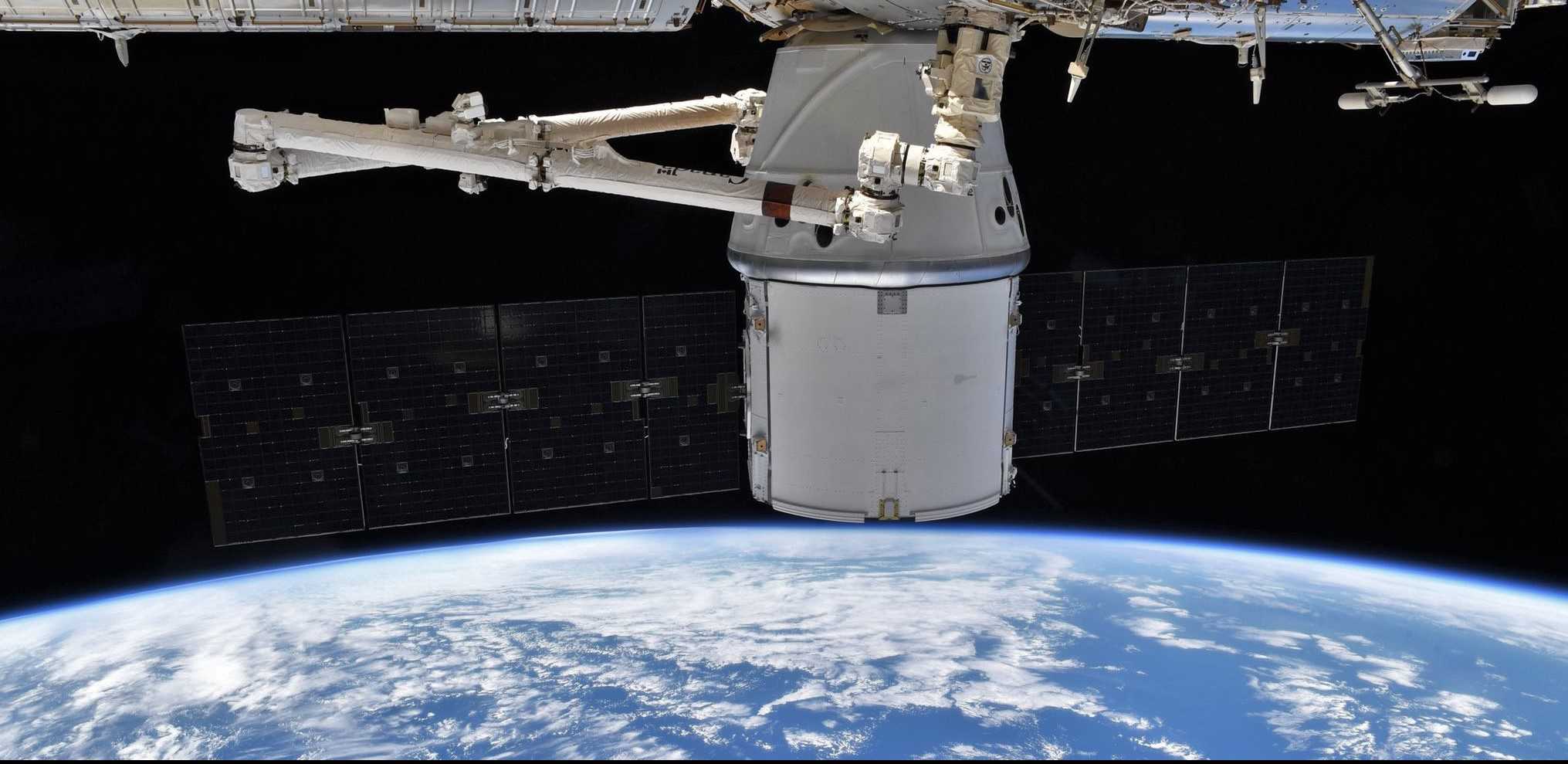
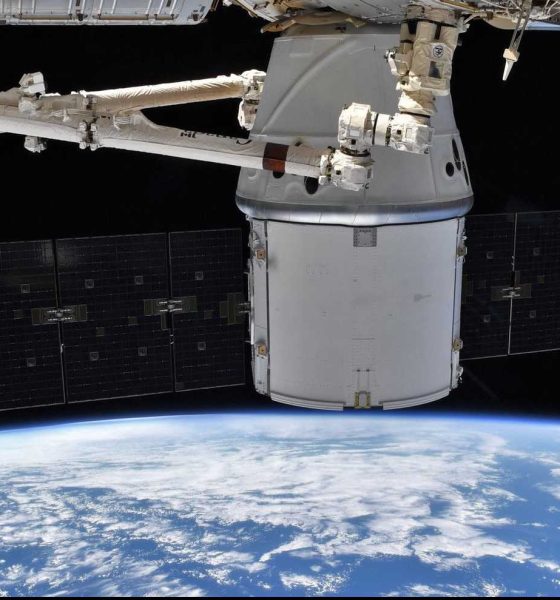
News
SpaceX Dragon spacecraft caught by robotic space station arm for the last time
On March 9th, SpaceX’s CRS-20 Cargo Dragon completed an uneventful journey to the International Space Station (ISS), where the spacecraft was successfully captured giant robotic arm for the last time.
Barring several major surprises, Dragon’s March 9th capture was the last time a SpaceX spacecraft berthed with a space station for the foreseeable future – possibly forever. Referring to the process of astronauts manually catching visiting vehicles and installing them on an airlock with a giant, robotic arm, berthing is a much younger technology than docking and was developed as an alternative for a few particular reasons. Perhaps most importantly, the Common Berthing Mechanism (CBM) ports used by Cargo Dragon, Cygnus, and HTV spacecraft are more than 60% wider than standard docking ports. In other words, spacecraft that berth can transport substantially larger pieces of cargo to and from the space station.
More significantly, however, the CBM standard came about in large part due to the decision to assemble the ISS out of 16 pressurized segments, each separately launched into orbit. Measuring about 1.25m (4.2 ft) wide, the CBM ports that connect most of the space station’s 16 livable segments make the ISS far more practical for the astronauts that crew it, while also allowing for larger hardware to be moved between each module. With Crew Dragon, design requirements meant that SpaceX had to move from berthing to docking, a trait SpaceX thus carried over when it chose to base its Cargo Dragon replacement on a lightly-modified Crew Dragon design.
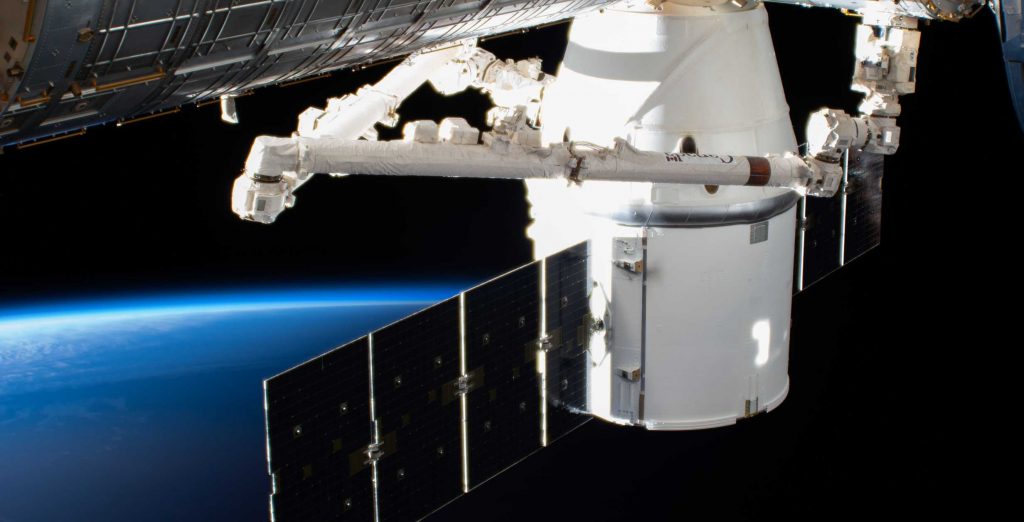
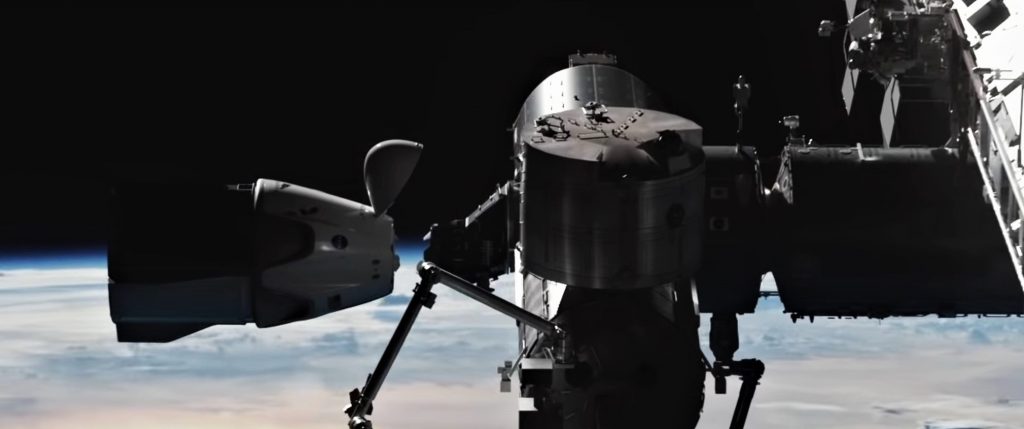
Now verging on routine, Cargo Dragon capsule C112 began its final approach to the International Space Station on March 9th, pausing at set keep-out zones while SpaceX operators waited for NASA and ISS approval to continue. After several stops, Dragon arrived at the last hold point – some 10m (33 ft) away from the station – and NASA astronaut Jessica Meir manually steered Canadarm2 to a successful capture, quite literally grabbing Dragon with a sort of mechanical hand.
At that point, Dragon – like a large ship arriving in port with the help of tugboats – is in the hands of external operators. At the ISS, Canadarm2 essentially flips itself around with Dragon still attached, carefully and slowly mating the spacecraft with one of the station’s free berthing ports. Unlike docking ports, the active part of a berthing port is located on the station’s receiving end, where electromechanical latches and bolts permanently secure the spacecraft to the station and ensure a vacuum seal.
Finally, once berthing is fully complete, ISS astronauts can manually open Dragon’s hatch, giving them access to the two or so metric tons (~4000 lb) of cargo typically contained within. All told, the process of berthing is relatively intensive and expensive in terms of the amount of time station astronauts and NASA ground control must spend to complete a single resupply mission. From start to finish, excluding training, berthing takes a crew of two station astronauts some 9-12 hours of near-continuous work from spacecraft approach to hatch open.
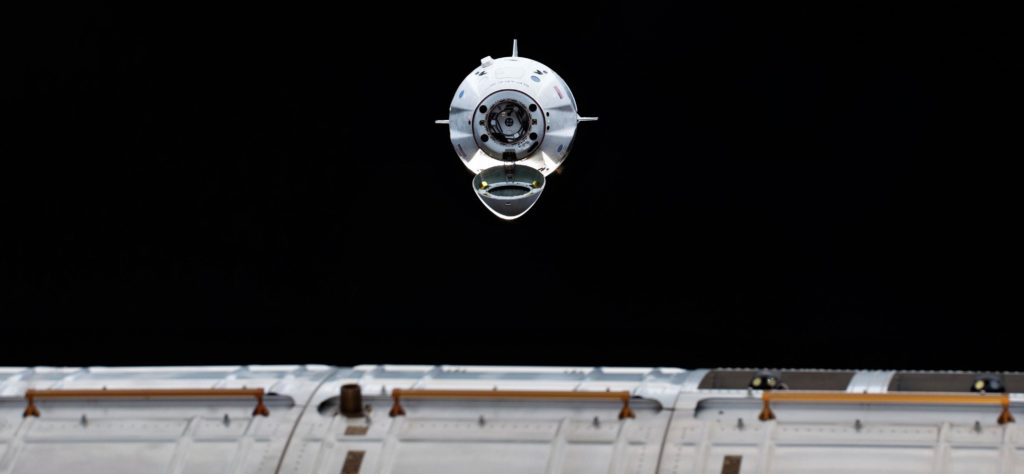
One definite benefit of the docking approach Crew Dragon and Cargo Dragon 2 will use is just how fast it is compared to berthing. Because docking is fundamentally autonomous and controlled by the spacecraft instead of the station, it significantly reduces the workload placed on ISS astronauts. Crew members must, of course, remain vigilant and pay close attention during the critical approach period, particularly with uncrewed Cargo Dragon 2 spacecraft. However, the assumption is always that the spacecraft will independently perform almost all tasks related to docking, short of actually offloading cargo and crew.
For now, CRS-20 will likely be SpaceX’s last uncrewed NASA cargo mission for at six months. CRS-21 – Cargo Dragon 2’s launch debut – is currently scheduled no earlier than (NET) Q4 2020. Nevertheless, Crew Dragon’s next launch – also its astronaut launch debut – could lift off as early as May 2020, just two months from now. With both SpaceX’s crew and cargo missions soon to consolidate around a single spacecraft, the odds are good that Dragon 2 will wind up flying far more than Dragon 1, and the start of its increasingly common launches is just around the corner.
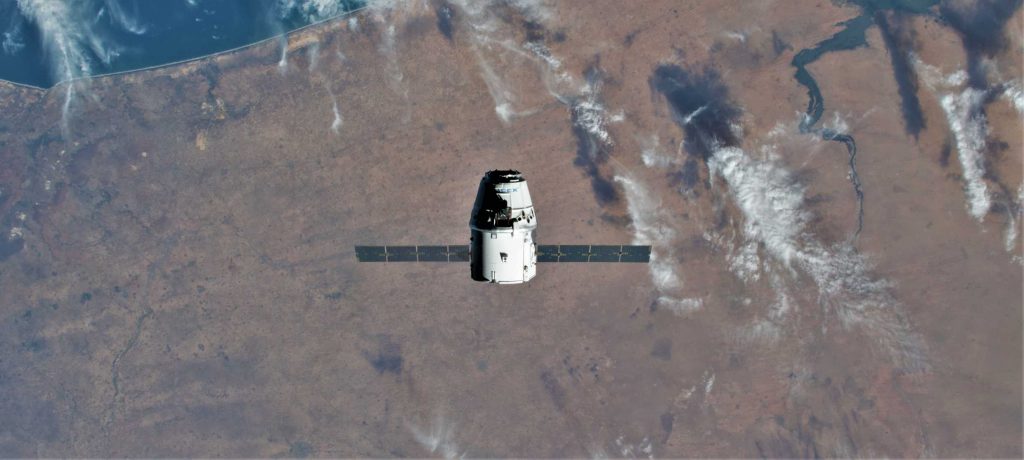
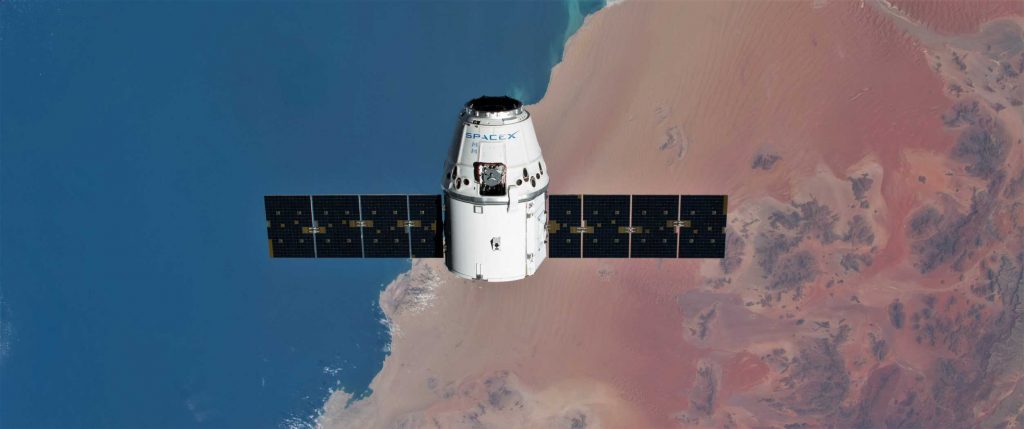
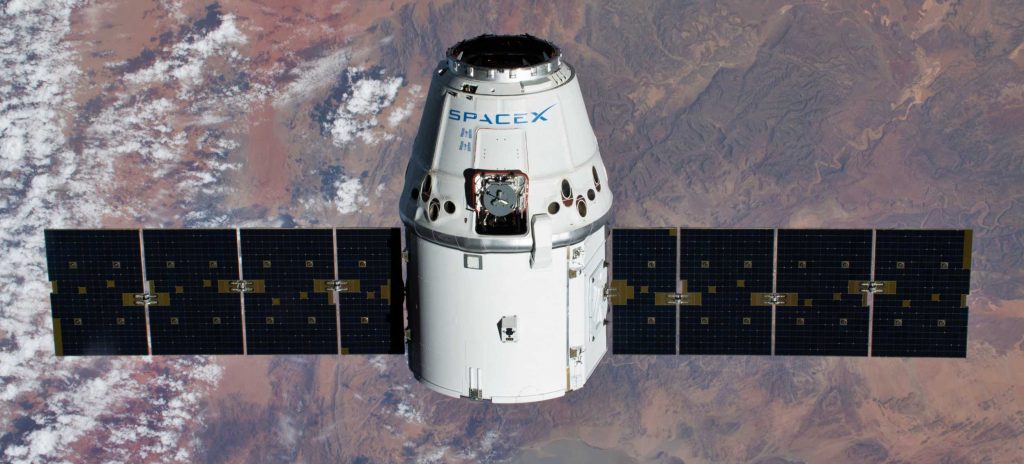

Check out Teslarati’s Marketplace! We offer Tesla accessories, including for the Tesla Cybertruck and Tesla Model 3.

Elon Musk
Tesla CEO Elon Musk sends rivals dire warning about Full Self-Driving

Tesla CEO Elon Musk revealed today on the social media platform X that legacy automakers, such as Ford, General Motors, and Stellantis, do not want to license the company’s Full Self-Driving suite, at least not without a long list of their own terms.
“I’ve tried to warn them and even offered to license Tesla FSD, but they don’t want it! Crazy,” Musk said on X. “When legacy auto does occasionally reach out, they tepidly discuss implementing FSD for a tiny program in 5 years with unworkable requirements for Tesla, so pointless.”
I’ve tried to warn them and even offered to license Tesla FSD, but they don’t want it! Crazy …
When legacy auto does occasionally reach out, they tepidly discuss implementing FSD for a tiny program in 5 years with unworkable requirements for Tesla, so pointless. 🤷♂️
🦕 🦕
— Elon Musk (@elonmusk) November 24, 2025
Musk made the remark in response to a note we wrote about earlier today from Melius Research, in which analyst Rob Wertheimer said, “Our point is not that Tesla is at risk, it’s that everybody else is,” in terms of autonomy and self-driving development.
Wertheimer believes there are hundreds of billions of dollars in value headed toward Tesla’s way because of its prowess with FSD.
A few years ago, Musk first remarked that Tesla was in early talks with one legacy automaker regarding licensing Full Self-Driving for its vehicles. Tesla never confirmed which company it was, but given Musk’s ongoing talks with Ford CEO Jim Farley at the time, it seemed the Detroit-based automaker was the likely suspect.
Tesla’s Elon Musk reiterates FSD licensing offer for other automakers
Ford has been perhaps the most aggressive legacy automaker in terms of its EV efforts, but it recently scaled back its electric offensive due to profitability issues and weak demand. It simply was not making enough vehicles, nor selling the volume needed to turn a profit.
Musk truly believes that many of the companies that turn their backs on FSD now will suffer in the future, especially considering the increased chance it could be a parallel to what has happened with EV efforts for many of these companies.
Unfortunately, they got started too late and are now playing catch-up with Tesla, XPeng, BYD, and the other dominating forces in EVs across the globe.
News
Tesla backtracks on strange Nav feature after numerous complaints

Tesla is backtracking on a strange adjustment it made to its in-car Navigation feature after numerous complaints from owners convinced the company to make a change.
Tesla’s in-car Navigation is catered to its vehicles, as it routes Supercharging stops and preps your vehicle for charging with preconditioning. It is also very intuitive, and features other things like weather radar and a detailed map outlining points of interest.
However, a recent change to the Navigation by Tesla did not go unnoticed, and owners were really upset about it.
For trips that required multiple Supercharger stops, Tesla decided to implement a naming change, which did not show the city or state of each charging stop. Instead, it just showed the business where the Supercharger was located, giving many owners an unwelcome surprise.
However, Tesla’s Director of Supercharging, Max de Zegher, admitted the update was a “big mistake on our end,” and made a change that rolled out within 24 hours:
The naming change should have happened at once, instead of in 2 sequential steps. That was a big miss on our end. We do listen to the community and we do course-correct fast. The accelerated fix rolled out last night. The Tesla App is updated and most in-car touchscreens should…
— Max (@MdeZegher) November 20, 2025
The lack of a name for the city where a Supercharging stop would be made caused some confusion for owners in the short term. Some drivers argued that it was more difficult to make stops at some familiar locations that were special to them. Others were not too keen on not knowing where they were going to be along their trip.
Tesla was quick to scramble to resolve this issue, and it did a great job of rolling it out in an expedited manner, as de Zegher said that most in-car touch screens would notice the fix within one day of the change being rolled out.
Additionally, there will be even more improvements in December, as Tesla plans to show the common name/amenity below the site name as well, which will give people a better idea of what to expect when they arrive at a Supercharger.
News
Dutch regulator RDW confirms Tesla FSD February 2026 target
The regulator emphasized that safety, not public pressure, will decide whether FSD receives authorization for use in Europe.

The Dutch vehicle authority RDW responded to Tesla’s recent updates about its efforts to bring Full Self-Driving (Supervised) in Europe, confirming that February 2026 remains the target month for Tesla to demonstrate regulatory compliance.
While acknowledging the tentative schedule with Tesla, the regulator emphasized that safety, not public pressure, will decide whether FSD receives authorization for use in Europe.
RDW confirms 2026 target, warns Feb 2026 timeline is not guaranteed
In its response, which was posted on its official website, the RDW clarified that it does not disclose details about ongoing manufacturer applications due to competitive sensitivity. However, the agency confirmed that both parties have agreed on a February 2026 window during which Tesla is expected to show that FSD (Supervised) can meet required safety and compliance standards. Whether Tesla can satisfy those conditions within the timeline “remains to be seen,” RDW added.
RDW also directly addressed Tesla’s social media request encouraging drivers to contact the regulator to express support. While thanking those who already reached out, RDW asked the public to stop contacting them, noting these messages burden customer-service resources and have no influence on the approval process.
“In the message on X, Tesla calls on Tesla drivers to thank the RDW and to express their enthusiasm about this planning to us by contacting us. We thank everyone who has already done so, and would like to ask everyone not to contact us about this. It takes up unnecessary time for our customer service. Moreover, this will have no influence on whether or not the planning is met,” the RDW wrote.
The RDW shares insights on EU approval requirements
The RDW further outlined how new technology enters the European market when no existing legislation directly covers it. Under EU Regulation 2018/858, a manufacturer may seek an exemption for unregulated features such as advanced driver assistance systems. The process requires a Member State, in this case the Netherlands, to submit a formal request to the European Commission on the manufacturer’s behalf.
Approval then moves to a committee vote. A majority in favor would grant EU-wide authorization, allowing the technology across all Member States. If the vote fails, the exemption is valid only within the Netherlands, and individual countries must decide whether to accept it independently.
Before any exemption request can be filed, Tesla must complete a comprehensive type-approval process with the RDW, including controlled on-road testing. Provided that FSD Supervised passes these regulatory evaluations, the exemption could be submitted for broader EU consideration.








